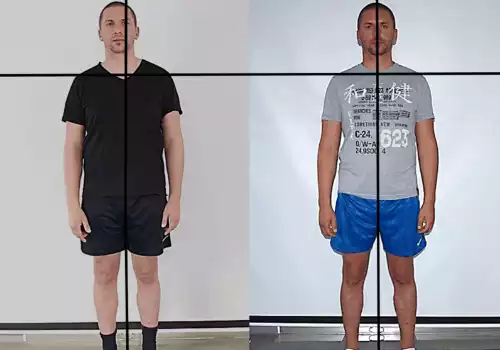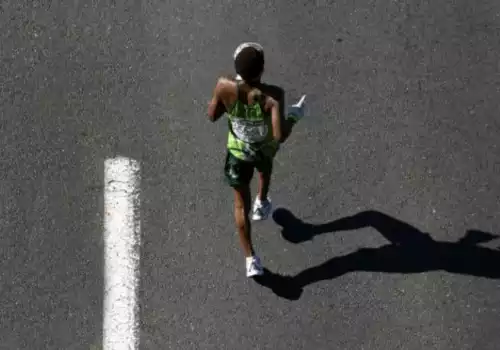Typical sciatica is radiating shooting pain that starts in the buttocks (usually on one side only), and this pain extends down the back of the thigh, even into the foot. Sensations may include numbness, burning sensation of pain running from the underside of the back that goes down into the buttocks and the back of the leg, or the sensation of a hot cord in the leg. Low back pain often occurs before that and accompanies sciatica. If the pain also expands to the front of your leg, you probably have muscle spasms in the quadriceps. If the pain extends along the side of the leg, the muscles that are attached to the iliotibial band (IT band) are likely to be strained.
Origin of sciatic nerve pain
Sciatica falls into the category of transmitted pain where the point where we feel the pain is not the point of its cause. Sciatic pain is caused by irritation (pressure on) of the sciatic nerve.
The brain perceives the pain as coming from a point where the nerve runs, although the cause is a compressed nerve at its origin; where it comes from the spinal cord, or somewhere along the path to the foot. A common cause of nerve pressure is chronic muscle tension, the constant stimulation of lower back muscles by the brain. Continuous stimulation is generated through a signal from the subconscious part of the brain that results from a pattern, which developed in the past due to frequent stress, constant overload or injury (sensory-motor amnesia). However, this acquired pattern can be changed by learning the AEQ method® and AEQ exercises and by that we can eliminate the causes of nerve pressure.
Sciatica can be reduced and resolved by developing adequate control of the involved muscles, and subconscious behavior patterns so you can lower the average muscle tonus in the back of the body and make them more responsive to control of the conscious part of the brain. ki pa jih moramo to šele naučiti. Sčasoma nadzor prevzamejo možgani.
Three types of sciatic nerve pain
There are two most common types of sciatica: (ordinary) sciatica and piriformis syndrome, and then there is also less common sciatica caused by herniated or bulging disc.
It is good to know the path of the sciatic nerve in order to understand the nature of sciatica better. The sciatic nerve is the longest nerve in the body, and it is actually made up of nerve roots that exit from the spinal cord at L3 – L5 level – the lowest three vertebrae in the lumbar spine (sacrum). It travels from your low back out through your buttocks and down your thigh to your knee, calf, foot and toes.
(Ordinary) Sciatica
The most common cause of sciatica is a combination of excessive curvature of the lower back and to contracted muscles of green light reflex and lateral inclination to one side and contracted muscles of trauma reflex. The combination of the two conditions creates pressure on the nerve roots and compresses the sciatic nerve. Consequently, this causes a dull, hot feeling of pain in buttock and leg.

Piriformis syndrome
Piriformis syndrome is a less common disorder than ordinary sciatica.

The medical definition of the piriformis syndrome: »… an irritation of the sciatic nerve caused by the contraction of the piriformis muscle, which is located in the buttock region (muscle spasms and causes buttock pain). The piriformis muscle can also irritate the nearby sciatic nerve and cause pain, numbness and tingling along the back of the leg and into the foot (similar to sciatic pain). « Differential explanation of the piriformis syndrome: Piriformis syndrome comes from contractions of the piriformis muscle in the buttocks (usually on one side only), over which, at some people, the sciatic nerve runs. At other people, it goes around that muscle. The passage through the muscle is not enough to cause the symptoms, but the muscle is chronically tense due to the sensory-motor amnesia. If the piriformis muscle is too strained, sciatica occurs. The main reason for piriformis syndrome is long term overload with permanent stress and to high pressure on knees with forces a person to fight with ego not to bend her knees and admit the defeat by weight of life. As that should not happen, soma tries to increase stability with pronation of the foot, and internal rotation of, tibia knee and femur. All that forces the system to increase the tonus in piriformis muscle for stabilizing the structure. If that didn’t happen, it would be impossible to have a straight walk toward the selected goal. That leads towards chronically tensed and overworked piriformis muscle which has to close SI joint and stabilize the pelvis and deal with an internal rotation of the leg and pronation of the foot.
The third type of sciatica
The third form of sciatica occurs when the spinal disc ruptures and the material from the extruded disc (nucleus pulposus) press against the nerve, or due to a wedge between the collapsed lumbar vertebrae (L3 – L5). This form of sciatica is rare, but because of the painful nature of sciatica, many people believe that this is what causes the pain. This diagnosis requires MR confirmation.
Even rarer is a disease in which the passages, through which the nerve roots from the spine (foramen) run, are narrow due to bone growth.
Usually, the last type of sciatica requires surgery. To successfully deal with sciatica the muscle contraction and average muscle tonus need to be lowered in the treatment of these types of sciatica, as it is always present in such cases and has also led to a bulging disc and has been further aggravated due to surgery. Therefore, learning the AEQ method® to reduce chronic tension and work on irregular posture and overstressed way of life and relationships. That minimizes the possibility of sciatica recurrence.
If the compression of the nerve has its origin in the muscles, the solution is, in principle, simple and, in practice, easily achievable by learning the AEQ method® and AEQ exercises which improve the control of the sensory-motor system over muscle tonus.
The AEQ method®, through active therapy and AEQ exercises, creates new, different sensory-movement patterns and habits, thus eliminating the muscular origin of sciatic nerve pain.
The second more demanding step is to analyze the way we react to stress and improve our efficiency in dealing with life changes and holding the weight of responsibility on our shoulders.
If we imagine that the back muscles are like the bow tendon and the spine muscles are like the arch itself, we can understand better what happens when the tension of the back muscles increases and the ability to relax that part of the body when we are not under stress is lost. Like the bow tendon keeps the bow curved, so does the irregular tension of the back muscles keep the upper back hunched, which is a result of the need to keep the head and view horizontally (arched back).
Combination of arched back and side body tilt is the cause of compressed nerve roots at the point of their exit from the spine or under the piriformis muscle. Result: sciatica (examples of changes in posture on photos below).
So, learning to fell our body sensation (reducing sensory amnesia), better control over posture and movement, predictably and painlessly reduces and relieves nerve pressure and eliminates pain. With pyriformis syndrome, pain relief is even faster and easier.
As soon as the tension and range of movement of the piriformis muscle are released and normalized, the pain diminishes and disappears.
Typically, 3-5 active therapies are required to achieve these results. But if the person wants to stay like that he or she has to change the relation to time and stress. In addition to the therapy itself, the client learns how to feel, control and eliminate subconscious movement patterns to prevent the possibility of their recurrence, and if the patterns recur anyway, a client has the knowledge to solve the problem on his own.
Example of a client with severe lower back pain on the right side and in the right leg before the AEQ method ® active therapies and after the three sessions, and after 40 days of performing AEQ movements (approximately 30 min/day) when the pain was gone.









